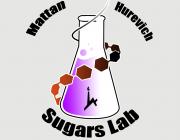We combine engineering and synthetic concept to improve solid phase synthesis efficeincy. Our approach rely on fast stirring to allow for enhences and green reaction processes.
- Accelerated peptide synthesis
Peptides are very useful tools for studying proteins function and in applications development. The synthesis of peptides today is ungreen and relatively slow. It requires the use of a high amount of reagents and solvents and usually requires expensive machinery to increase the process efficiency. We develop new ways to accelerate solid-phase peptide synthesis processes. We do that while maintaining low molar equivalents thereby make the synthesis economic and more environmentally friendly. We optimize the synthesis, change the reagents, the conditions, and even redesign the reactor architecture to find the most efficient way to synthesize peptides, glycopeptides, phosphorylated peptides, and more..
- Phosphorylation
Phosphorylation has a high impact on protein structure, function, and interactions. This highly abundant modification can be found in various positions on the proteins and in different patterns. When the phosphorylation pattern of the same protein changes it creates proteoforms with different functionality and interaction preferences. We develop tools to synthesize multiphosphorylated peptides. These special entities enable us to elucidate the exact function and binding preferences that are dictated by the distinctive phosphorylation code. We use new solid-phase synthesis strategies to automated and accelerate the synthesis libraries of multiphosphorylated peptides.
- Peptide based biosensors
Peptides are versatile bioactive entities with unique properties. Because of the variety of building blocks and the ease of synthesis they serve as fantastic tools in the development of biosensors. The specific activity and affinity of peptides can be tailored by introducing synthetic modifications and that can be easily equipped with a functional handle that enables attachment to surfaces. We use peptides as a recognition layer and harness their native binding selectivity to produce biosensors for metal ions and enzymatic reactions which can be used to monitor diseases such as multiple sclerosis and cancer.

